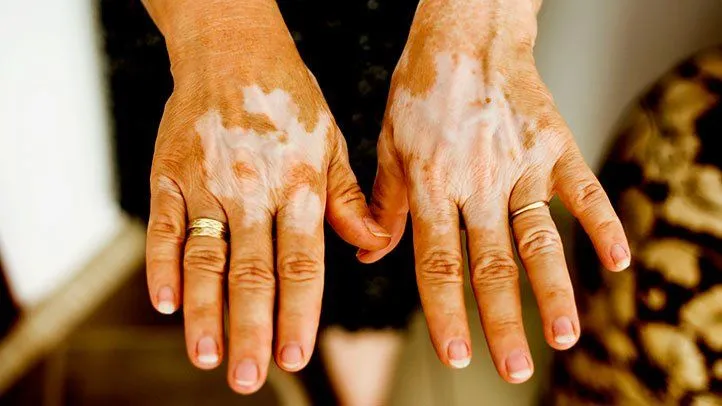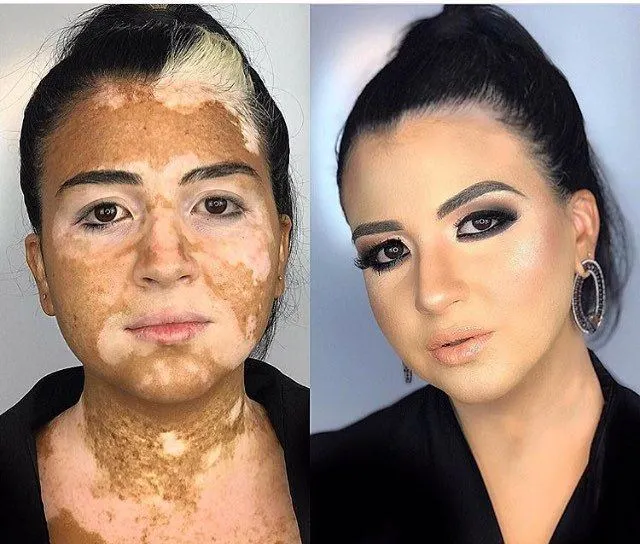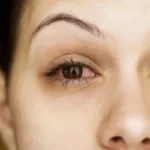What Is Vitiligo?
Contents
Vitiligo is a long-term skin condition characterized by patches of the skin losing its pigment (1). which is also known as white or white leprosy in Hindi.
It is an autoimmune disease, in this, the colour-producing cells in our body are called “melanocytes“, against which our immune system reacts, due to which white spots start appearing.
People with vitiligo are also somewhere more prone to other autoimmune diseases – such as thyroid, Addison’s disease, anaemia, and diabetes mellitus (2).
Vitiligo is not spread and is not life-threatening. But it can be life-altering, due to which some people can lose their self-esteem.
It can affect any area of skin, but most commonly it appears in the neck, hands, feet, and face.
NOTE: In addition, every year 25 June world celebrates vitiligo day, which is the best way to aware people of this disease.
So please do not discriminate against these people and help them interact with normal people. This is our message.

2. What Causes Vitiligo?
Its exact causes are unknown, but after some time scientists will also be found out.
Here are the potential causes of vitiligo. They include:
- An autoimmune disorder is major cause of this disease
- Genes (family history) – About 30% of vitiligo cases run in families.
- Neurogenic factors – Toxic substances for melanocytes may be released at nerve endings in the skin.
NOTE: Every white spot is not vitiligo. white patches also appear in some other health conditions, including:
- allergy
- atopy
- Certain infection, which also causes white spots, and their treatment is different from vitiligo.
3. Misconceptions about vitiligo
There are many misconceptions among people regarding vitiligo, due to which the people suffering from this have to keep themself hidden, especially in a social place.
Here are misconceptions that everyone should know about, before saying anything else to a vitiligo person. which include:
- A common myth – This happens by drinking milk after fish.
- This disease is not an untouchable disease. This neither is spread with play, sitting, eating and sleep.
- By eating any kind of white ingredients, this disease neither increases nor arises.
- Many people do not eat sour things which is not right. they should eat sour, which contains vitamin C, which acts as an antioxidant and also helps in fighting disease.
4. How common is it?
It is a white spot in our skin, which can affect any part of the body, usually, it began with the mouth, hands, and foot, but it can spread to other parts of the body.
This disease occurs in 1 to 2 % of people around the world, and in India, it affects 2 to 4% of people.
NOTE: It can affect both men and women equally. And vitiligo rarely appears in the very young or very old (3).
Additionally, patches often begin on areas of skin that are exposed to the sun. It is more noticeable in people with dark skin (4).
5. Symptoms of Vitiligo
Its symptoms appear in 10 to 20 years old people, here are some signs and symptoms of vitiligo include:
- The most common sign – after the white patches appear, they may stay the same for a while, but later on, they might get bigger.
- Hair can turn white, and you can see this in the scalp, eyebrows, eyelashes, and beard, where the skin is losing pigment.
- Loss of colour in the tissues that line the inside of your mouth and nose.
Some people may experience itching before a new patch occurs (5).
6. Some Mistakes that Trigger Vitiligo
Some situations or events that can trigger or exacerbate vitiligo condition such as:
Sunburns – The National Institutes of Health states that believe that it can cause or exacerbate this condition, but this idea is not well-supported by good evidence.
Stress – Taking mental stress can increase this disease.
Contact with chemicals – chemicals that make this condition worse. for example – at work.
7. How To Diagnose Vitiligo?
The most important is the identification or diagnosis of this disease. And every white patch is not vitiligo.
A doctor will perform a physical exam, and ask about medical history.
The doctor may ask you about – where in the body first did this happen, whether anyone in the family like this or have an autoimmune disorder, etc.
Then, the doctor can also perform some tests to diagnose. which include:
- Ultraviolet light – Also known as wood, or black light, the doctor will shine UV light on your skin. If you have vitiligo, the light makes your skin appear chalky.
- Blood tests – The doctor may take blood to check your autoimmune condition.
- Skin biopsy – In this, the doctor takes a sample of skin, so that will tell if the area of your body still has pigment-producing cells or not.
Before and After Picture

8. Treatments of Vitiligo
Treatment depends on what percentage of the body is affected by this disease.
If a doctor cites an autoimmune condition as the cause, then the focus is on stopping the immune system from destroying the melanocytes and improving the skin’s appearance.
So, the doctor can give some immune-related medicines such as:
- Immune suppress
- Zinc
- Immune modulators, considered to be first-line vitiligo treatments
Learn – Our Immune System | Work, Parts, Boost, And More
Medication
Cream – which might take months to see changes in your skin. however, it also has some side effects such as – thinning of the skin or the appearance of put on the skin.
Medicines – mild drugs may be prescribed for children, but the FDA also states the risk between these drugs and lymphoma and skin cancer.
In some cases, Injections may be included by a doctor.
Therapies
UV light and skin cream – In this, the doctor tells us to take psoralen as a pill or apply skin cream.
The doctor exposes you to UVA light to activate the drugs which help restore colour to your skin.
However, it has some side effects such as:
- Itching
- swelling
- burning sensation
- dry skin
- redness
- nausea
Other therapies include:
- Depigmentation
- light therapy
Surgery
If therapy and medications don’t work, then some people can go with the surgery option, which might beneficial
Repigmentation – It involves colouring the white marks.
Skin grafting – Your doctor can transfer your healthy pigmentation skin to the area, where the lost lost vitiligo has occurred, it suggests small patches of vitiligo.
Blister grafting – In this, the surgeon grows blisters on your healthy skin. then the top of the blistered skin is applied to the discolored skin.
NOTE: Duration of treatment cannot be fixed.
9. Keep in Minds Things
Avoid, or minimize sun exposure by wearing protective sunglasses, and wearing full slives clothes.
You can use makeup, that will show your skin color in a single tone.
Manage your mental health – because social behaviour can make you feel more stressed, which triggers vitiligo more. so do whatever you like, avoid such things.
Use sunscreen SPF 30, when you go outside.
Avoid tattoos, which can damage the skin, and make the condition worse.
Talk to your doctor, if you saw even little white patches on your skin. By diagnosing this disease early, the treatment will be better.
BOTTOM LINE
Avoid, sun exposure by wearing protective sunglasses, and wearing full slives clothes. Use sunscreen.
It is a white spot in our skin, which can affect any part of the body, usually, it began with the mouth, hands, and foot, but it can spread to other parts of the body.
This disease occurs in 1 to 2 % of people around the world, and in India, it affects 2 to 4% of people.


